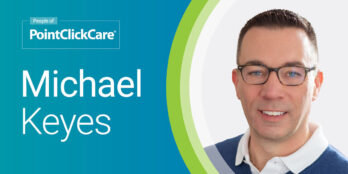
Value-Based Care: Owning the Conversation With Hospitals
 4 min
4 min
In two recent posts, we looked at what it means for SNFs and LTPACs to be preferred providers, and how interoperability can help you achieve that status with hospitals. But being able to better participate in your networks — and maintain or even increase your referrals — is not a given. Hospitals can best understand and act upon the professionalism and success of the care you provide to post-acute patients only when you create a collaborative relationship with them.
As the reimbursement system continues to transition from fee-for-service to fee-for-performance, the focus has shifted to two basic measures: quality of care and cost of care. Given these changes, how do you accurately demonstrate the performance and true value of your facility to current and prospective hospital partners? Yes, interoperability is a major part of the solution. But in order to change the conversation, episodic care management is necessary, too. As you gather in San Diego this week for the AHCA/NCAL Convention, let’s first examine some of the challenges you face.
Vital Information Has Been Missing
Under the fee-based model, SNFs traditionally received very little information about residents transferred from hospitals. A basic discharge summary was considered sufficient, and the SNF had to figure out the rest of the resident’s story on its own. Hospitals were handing off care and didn’t see a particular need to follow the patient’s progress or collaborate with the SNF. This practice unfortunately led to many unnecessary readmissions — costly both to the SNF and the hospital — and often further deterioration in the resident’s condition.
Fast-forward to today’s value-based care scenario. As you know, the most expensive part of the resident’s care bundle is often the SNF stay. Now hospitals are basing their decisions about which SNF to choose, or even if a SNF stay is necessary at all, on how much financial risk they will assume in making that transfer. Often they’re judging you on data that is no longer current. Every hospital is looking for a SNF with short lengths of stay, low readmission rates, and strong quality metrics. However, your facility can’t check off any of those boxes if you’re not able to easily produce and share real-time patient care information and up-to-date performance statistics.
We’re Ready to Help You Work Together at a Higher Level
So how do you and your partner hospitals receive a clearer picture of the residents you serve? By adopting a post-acute care platform that offers full interoperability and an episodic care coordination tool. We believe that as the leading LTPAC partner today, it is our responsibility to help our LTPAC partners thrive in their partnerships. Such a solution is currently being utilized by some of our more strategic PAC partners and hospitals. SNFs and hospitals need to share more information about every patient, increasing visibility and coordination in both directions. By providing the SNF with detailed and thorough patient information at the time of transfer, a hospital can help mitigate the risk of readmission. At the same time, the SNF must continue to provide access to patient information to the hospital, to help identify potential patient risks and avoid emergencies or readmissions. The SNF and the hospital together can plan for a successful discharge of the resident, with appropriate follow-up services.
PointClickCare’s cloud-based solution will help you and your hospital partners eliminate silos of care and work towards a true continuum of care. Finally, patient data can be intrinsically tied together, greatly reducing SNF-hospital meetings, phone calls, and in-person visits. With optimized data exchange, hospital care managers can verify the location of their discharged patients, and ensure their continuity of care during transition to the SNF. Hospitals and SNFs can eliminate avoidable redundancies and errors, in areas such as transfer documentation and medication reconciliation.
Also, thanks to actual interoperability — where your technology platforms and software applications and those of your hospital partners connect, communicate, and exchange data — the hospitals will have real-time visibility into how their patients are doing in the SNF. They’ll be able to view pertinent patient data from many different perspectives. At the same time, by enabling access to its performance metrics, the SNF can demonstrate to the hospital that it is a collaborative partner in the care continuum. The proof of reduced lengths of stay or fewer readmissions will be front and center. The critical insights revealed will drive care coordination across the SNF’s population and business decisions.
Seize the Opportunity to Tell Your Story and Demonstrate Your Value
LTPAC now has the chance to own the conversation with hospitals. With a solution that reveals each facility’s specific strengths, you will help hospitals recognize the value that SNFs bring to the equation, and the importance of building relationships with LTPAC. With unprecedented visibility, hospitals will be able to see the metrics and the story behind the metrics. SNFs and hospitals will collaborate to provide higher quality care and the positive outcomes will follow.
To learn more about how PointClickCare can help your organization to #CareConfidently, visit us at booth #1113 at AHCA and booth #1613 at Leading Age.
October 8, 2018






